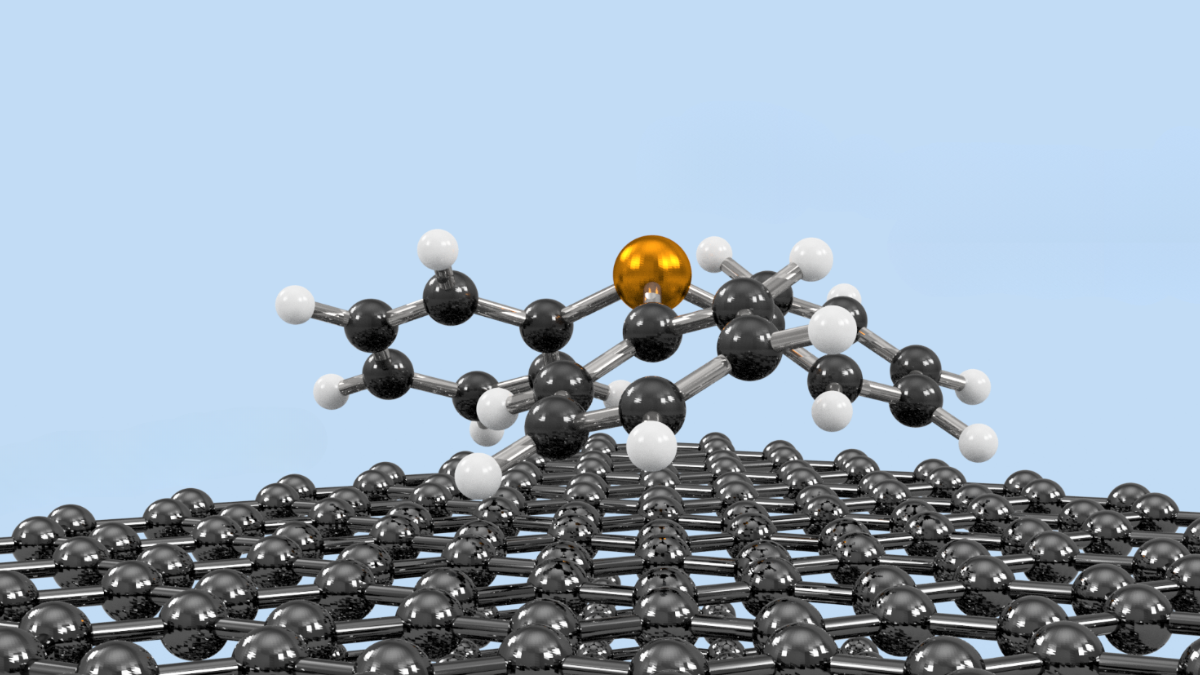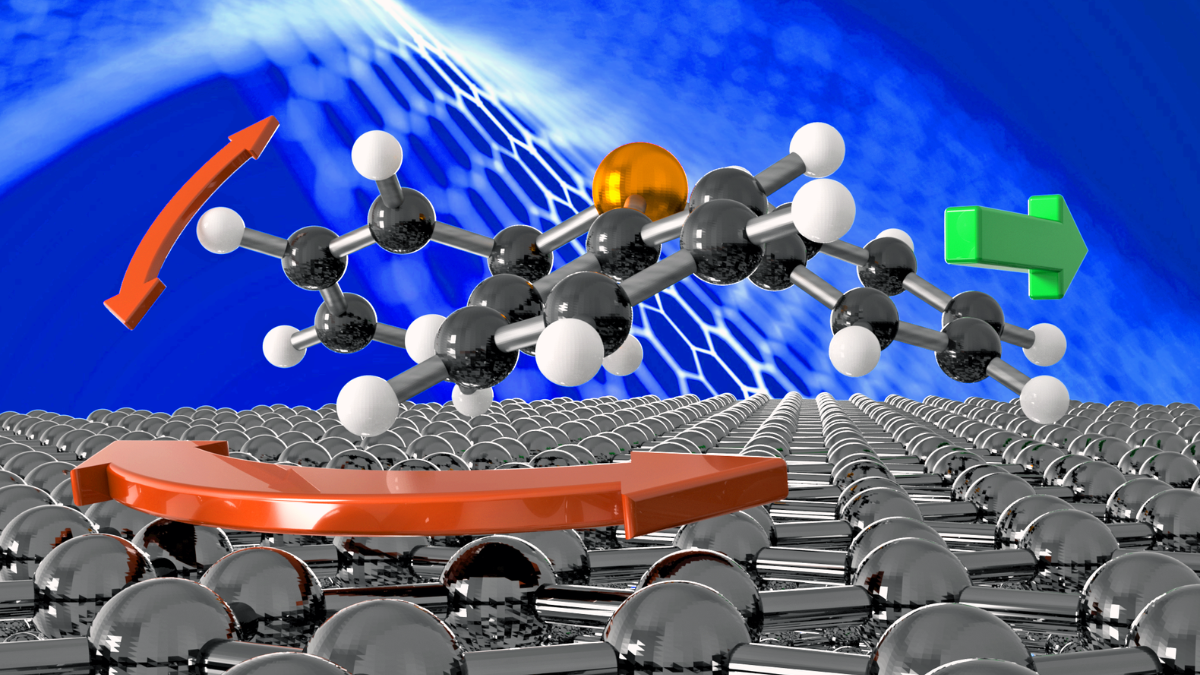‘Like a nanoscopic Moon lander’: scientists reveal how pyramidal molecules move across surfaces
Scientists have watched a molecule move across a graphite surface in unprecedented detail.
It turns out this particular molecule moves like a Moon lander – and the insights hold potential for future nanotechnologies.

Researchers have achieved a ground-breaking understanding of molecular movement thanks to this study from the University of Surrey and the Graz University of Technology, Austria.
Studying how molecules move is crucial for understanding chemical reactions and making nano-scale devices.
To unlock these secrets, scientists studied molecules of triphenylphosphine (PPh3). These three-pointed, propeller-like structures have a range of uses, from delivering drugs into cells to lithium batteries.

Using a unique combination of neutron spectroscopy and advanced computer simulations, the scientists observed how they behaved on a graphite surface.
The team was surprised to see PPh3's remarkable motion – jumping and rotating like a spacecraft touching down on the lunar surface. This allowed them to move using surprisingly little energy.
The results could lead to new advanced materials or more efficient ways of making medicines and nanotechnology.
The study is published in the journal Communications Chemistry.
Related sustainable development goals

Media Contacts
External Communications and PR team
Phone: +44 (0)1483 684380 / 688914 / 684378
Email: mediarelations@surrey.ac.uk
Out of hours: +44 (0)7773 479911

